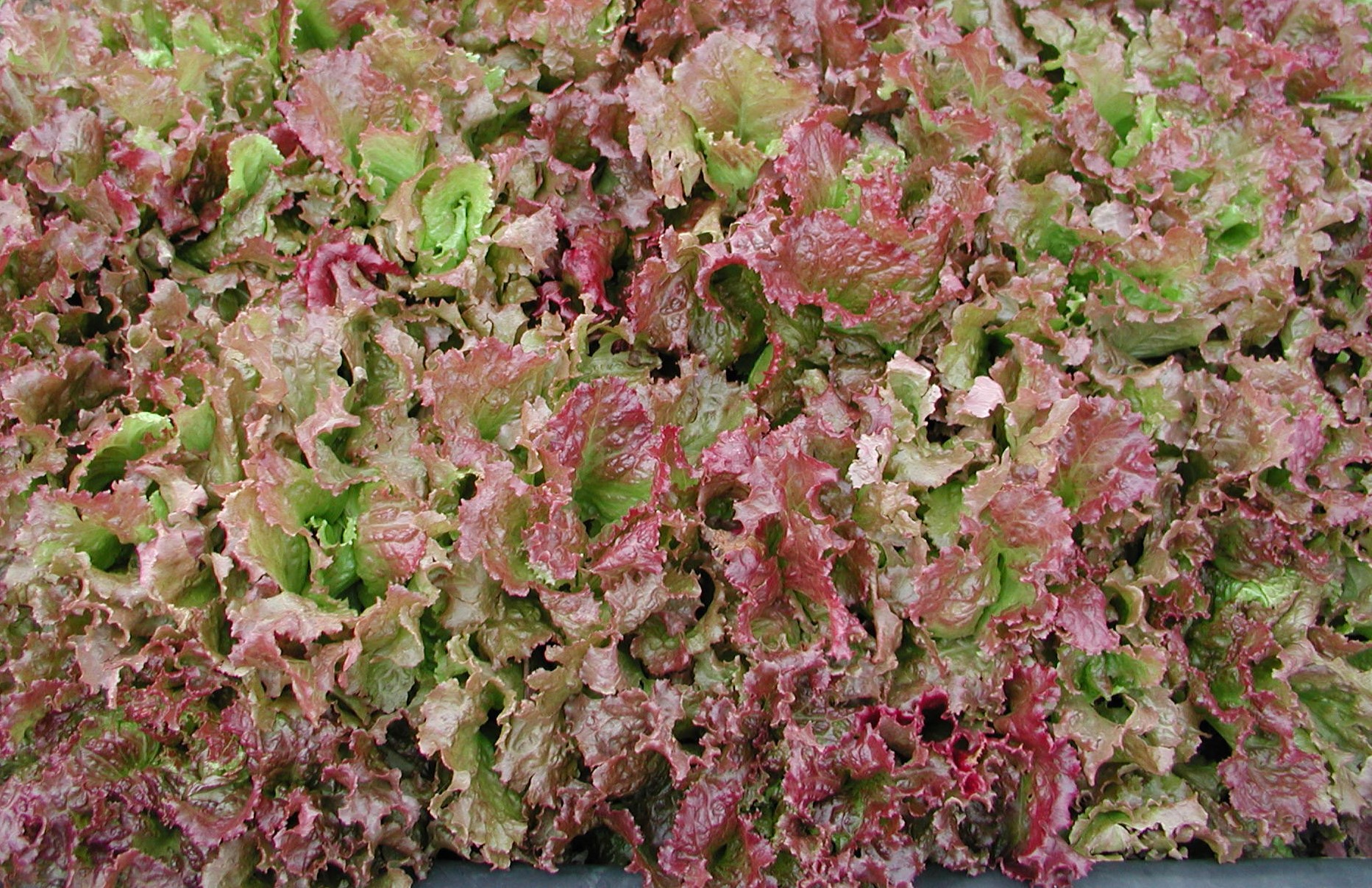Resource Library
Plant of the Week: Vertical Farming
VERTICALLY FARMED — Vertical farming is a cropping system that attempts to precisely control every aspect of plant growth to maximize production. What it takes to make a plant grow optimally has been studied for several hundred years, but the ability to precisely control all of these inputs has only come about during the past 50 years. Providing the needed light has been doable, but at a high cost. (Image courtesy Gerald Klingaman)
Download High Resolution
I went out for breakfast last week to a place with yuppie roots. You could tell because instead of a proper side of hash browns with my omelet, there was a heaping pile of baby greens. Looking at these greens – all so perfect and tender – I had to wonder if maybe they were grown indoors under artificial lights. Indoor growing – once the domain of marijuana growers – is now moving into other crops in a system usually called vertical farming.
Vertical farming is a cropping system that attempts to precisely control every aspect of plant growth to maximize production. What it takes to make a plant grow optimally has been studied for several hundred years, but the ability to precisely control all of these inputs has only come about during the past 50 years. Providing the needed light has been doable, but at a high cost.
But over the last couple decades two things happened. First, LED lights were invented that drastically reduced the cost of energy needed to grow crops indoors. Secondly, the grow-local movement – spurred in part by a consumer desire to reduce pesticide usage on food – developed a national following. The idea of controlled environment growing has been around for a while, but venture capitalists took notice and vertical farming had the financial backing needed to make it happen.
According to Dr. Ryan Dickson, the greenhouse researcher at the U of A in Fayetteville, there are around five major national vertical farming firms currently operating, all initially funded by venture capitalists. One of these, 80 Acres Farms, an Ohio-based firm with growing operations in North Carolina, Alabama and Springdale, Arkansas, announced in July 2019 that it is investing $40 million dollars in a completely automated growing operation in Hamilton, Ohio that will use artificial intelligence to manage robots in all phases of production – from seeding through harvesting.
Ashley Meek, the U of A dietitian, manages a small indoor growing operation called the “Leafy Green Machine” that is used as an educational tool on campus and to provide greens for an on-campus produce store. The unit is housed in a shipping container outfitted with all the bells and whistles needed to make it work
Lighting is provided by a combination of red and blue LED bulbs that give off a sickly purple glow but provide the exact wavelengths of light the plants need. Carbon dioxide levels are about three times found in outside air to speed up photosynthesis. The plants are grown hydroponically with a nutrient solution so no soil is used. All of this is remotely controlled and monitored by computers. She doesn’t use robots, instead undergraduate students plant a new crop every week, with production time on butter crunch lettuce taking seven weeks from start to finish.
Vertical farms are promoted as producing sustainable crops. They cut out all the diesel fuel need to ship the vegies from California, Florida or Mexico, they use only a fraction of the water and nutrients needed for traditional growing operations, and unless aphids attack, there is no need for pesticides. But are these growing operations economically sustainable?
That is still an open question. Dr. Dickson says that the capitalization required for vertical farming operations is still quite high, and even with LED lighting, utility costs still run about 30 percent of operating costs. The investment in robotics for the Hamilton, Ohio operation is designed to cut out hand labor costs which run between 30-40 percent in a conventional operation. To make it all cash flow, the crops that grow fast and are of high value, are the ones that will succeed. Lettuce, baby greens and herbs are the mainstay at the moment but cherry tomatoes and maybe even strawberries could work. Biopharmaceutical crops such as tobacco plants that have been genetically engineered to produce drugs is another possibility.
For more information about horticulture or to see other Plant of the Week columns, visit Extension’s Website, www.uaex.uada.edu, or contact your county extension agent. The Cooperative Extension Service is part of the U of A Division of Agriculture.
